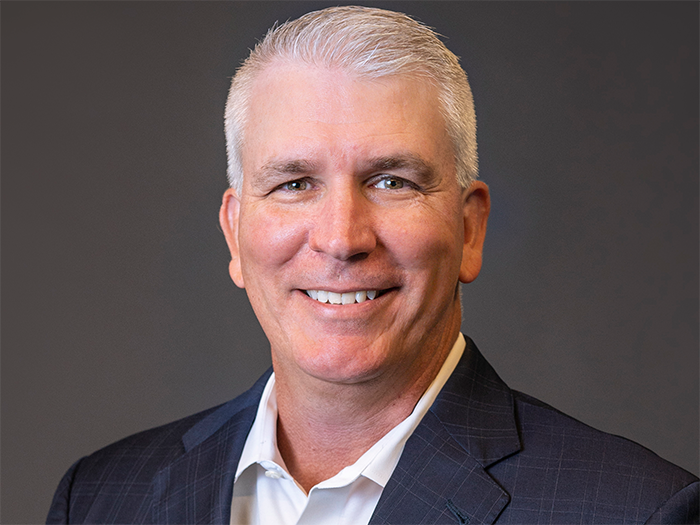Here’s How Artificial Intelligence Is Poised to Transform Insurance Underwriting for the Better

The words “artificial intelligence” might make you think of movies like The Terminator. Machines that learn like humans can be a frightening thought, especially if they look like Arnold Schwarzenegger and roam through Los Angeles wearing dark sunglasses and shooting machine guns.
But in real life, artificial intelligence has far more practical applications and is poised to forever transform insurance underwriting.
Imagine workers’ comp underwriters quickly analyzing thousands of pages of medical bills and health records to predict injury risks. Imagine commercial property underwriters seamlessly incorporating external data from city governments, regulatory agencies and news sources to get a clearer picture of a risk. Imagine a shipping company that’s charged more for premiums when sailing into bad weather or hostile territory.
“Artificial intelligence will fundamentally disrupt and transform insurance underwriting,” said Ari Libarikian, senior partner at McKinsey & Company. “Carriers are now able to better predict losses, provide advice and help customers prevent risks. AI is allowing that in a much bigger way than was ever possible before.”
Experts believe AI will soon deliver more accurate risk assessments, superior customer experiences and serious cost benefits for insurers. The insurance industry is investing heavily in the technology, filing 37 percent more machine-learning patents in 2017 than 2016, according to law firm RPC.
Accenture found that 63 percent of insurance executives say the industry will be completely transformed by intelligent technologies, and 53 percent are already using them in one or more business process. The firm estimates that investments in intelligent solutions could increase annual profitability for U.S. insurers by $20 billion.
“This space is changing so quickly that any carrier trying to do it themselves is probably not going to be fully successful.” — Ari Libarikian, senior partner, McKinsey & Company
Artificial intelligence has the potential to take underwriting from a detect-and-repair mindset to a predict-and-prevent philosophy. That means fewer educated guesses, more accurate information and not only making sense of treasure troves of data but using it as a competitive advantage. The AI revolution is coming, and underwriting will never be the same.
Data, Data, Data
The incoming AI revolution is fueled by an explosion of data. Low-cost data storage on the cloud, open-source technology, digital sensors on machines and worn by workers, and the overall digitization of business processes has created a landscape where data is far more available than ever before.
From a restaurant’s health inspection performance to a factory’s OSHA violation history, an incredible amount of data is currently available to underwriters — and machine-learning technology can analyze it to find red flags and help make more accurate underwriting decisions.
“There is no industry that has more data than us, but we don’t tend to deal with it well,” said Kate Browne, senior vice president of Swiss Re Corporate Solutions and a Risk & Insurance® Risk Insider. “Human beings just don’t have the ability to deal with the massive amounts of data we are getting now. That’s the competitive advantage of AI, being able to use this data deluge to make better decisions.”
All that data, analyzed by AI, will make underwriting far more accurate than it is today. Imagine life insurance underwriters automatically incorporating information about your prescription drug history, gym club memberships, shopping habits and travel plans. Or commercial property underwriters analyzing public data to learn the locations of each plant around the world, the machinery used inside, the number of workers, their skill sets and OSHA violation history.
“Based on all that, we can get a pretty good sense of the risk. Do you form a complete picture from external data alone? Probably not, but you get part of the picture and it makes a difference,” said Libarikian.
AI can also help in underwriting risks where there isn’t much history — like cyber risk or weather risks. With AI and Big Data, you can churn through billions of scenarios and make educated predictions, said John Cusano, senior managing director in Accenture’s Financial Services Management Consulting Practice.
“It would be not only great for the industry but [also] great for the world. How are we going to deal with the increasing pace of new risks?” said Cusano. “We’ve got to get better automation and intelligence on how to write insurance for unpredictable risks.”
The influx of data plus the use of AI could make the customer experience far superior, too. Expect the number of forms and questions to decrease as underwriters let machine modeling do the heavy lifting. It could bring the timeline from months to seconds for some lines of insurance.
“Do you know how easy it is to deal with Amazon? That is what this technology will let us do,” said Browne.
Will AI Replace Human Underwriters?
The use of AI certainly comes with concerns. Companies using external data need to comply with privacy and regulatory rules. Still, in many cases, customers will offer information if it leads to more value, said Libarikian.
“They’re willing to sign away information about their gym membership knowing they’ll get a 10 percent reduction in premiums,” he said.
Another concern is computer system malfunctions. But Cusano said machine learning will likely lead to less danger in the long run.
“It would be not only great for the industry but [also] great for the world. How are we going to deal with the increasing pace of new risks? We’ve got to get better automation and intelligence on how to write insurance for unpredictable risks.” John Cusano, senior managing director, financial services management consulting practice, Accenture
“What’s more likely to miss something, a machine or a human, when you’re talking about millions of data points?” he said. “With all the data proliferation, if you’re not using machines, how are you really going to keep up and stay relevant?”
Despite experts’ confidence in AI, they don’t expect human underwriters to simply go away.
“You’ll still need human beings to apply judgment for complex cases,” said Libarikian, who expects the underwriting profession to soon incorporate far more data-science expertise.
Cusano agreed in part, saying that very structured lines like automobile underwriting can rely heavily on rules engines to make decisions, but agreed further that other lines will still need human interaction.
“For property and casualty underwriting, it’s a lot more complex, especially as you get into large property and large commercial where the machines are part of the process and slowly nipping away at some of the decision making,” said Cusano.
Tony Boobier, an independent consultant and author of Analytics for Insurance: The Real Business of Big Data, also said human underwriters aren’t going anywhere, especially those dealing with more complex or specialty lines.
“Maybe we need to think of it in a different way,” he said. “Imagine a profession called the ‘digital underwriter’ that works alongside expert AI systems to ensure all risks are accurately measured and priced.”
How to Prepare for the AI Revolution
The entire industry needs to get educated about artificial intelligence so they can be a part of defining the future, rather than leaving it in the hands of technology vendors — or simply losing out to more progressive competitors. One thing is crystal clear: Underwriters of the future will need data-science skills, and executives will need an open mind.
“As underwriters increasingly interact with automated AI systems, there will be a need for new skill sets to develop, such as open-mindedness and mental agility. And some of the old skills might become obsolete,” said Boobier.
“I think we can do this in a constructively critical way, rather than being negative about it. But at least we have the chance at this relatively early stage to contribute to the discussion and form it in the way we think best, rather than complain about it afterwards.”
Smart insurers are already creating chief analytics officer positions, buying more and more external data and building proprietary models. And they’re not going it alone. They’re working with tech startups that specialize in AI.
“This space [is] changing so quickly that any carrier trying to do it themselves is probably not going to be fully successful,” said Libarikian. “As a carrier you’re going to need to form an ecosystem of capabilities — some internal and some external.”
Another big need is getting people comfortable with changing their day-to-day workflows.
“People have been doing their job one way for years or decades and now they need to do things differently,” said Libarikian. “That’s the No. 1 roadblock to carriers capturing full value of this new technology. It’s not the science, it’s the human change management side of things.”
Libarikian suggests that carriers start small. Take one or two use cases and deliver them end-to-end. If it’s property insurance, get the data, build the model, get your executives on board and start to show real value. Then expand.
“Companies get in trouble when they try to take on too much too soon,” said Libarikian. “If you don’t deliver on the first opportunities really well, people come out of the woodwork and say, ‘I told you so, this stuff is all snake oil’ and then you lose the momentum in the organization.” &












